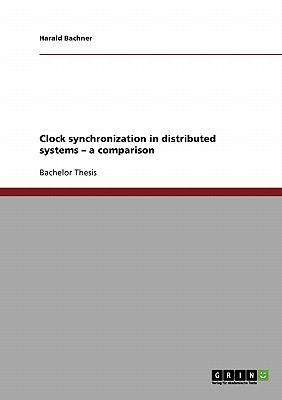
- We will send in 10–14 business days.
- Author: Harald Bachner
- Publisher: GRIN Verlag
- Year: 2007
- Pages: 72
- ISBN-10: 3638673669
- ISBN-13: 9783638673662
- Format: 14.8 x 21 x 0.4 cm, softcover
- Language: English
- SAVE -10% with code: EXTRA
Clock synchronization in distributed systems - a comparison (e-book) (used book) | bookbook.eu
Reviews
Description
Bachelor Thesis from the year 2007 in the subject Computer Science - Technical Computer Science, grade: 1,0, University of Applied Sciences Technikum Vienna (Informations- und Kommunikationssysteme), language: English, abstract: Clock synchronization is a necessary and critical part in most distributed systems. For many years NTP was the state-of-the-art way of synchronizing computer clocks distributed in space. However, as recent advances in miniaturization lead to the construction of smaller, more powerful and less power consuming computers, embedded devices, sensors and actuators, the need for more precise time synchronization grew. This work thus sets out to compare selected approaches to clock synchronization in distributed systems. The well known Global Positioning System is disseminating accurate time and frequency information from the International Institutes that keep the time, NTP can still do the same, but at different levels of accuracy as well as cost. Clock synchronization protocols like IEEE1588 or TTP and bus architectures like FlexRay evolved from the need to further propagate the timing information within small networks and therefore staying within the specified limits of preciseness.
EXTRA 10 % discount with code: EXTRA
The promotion ends in 5d.21:18:14
The discount code is valid when purchasing from 10 €. Discounts do not stack.
- Author: Harald Bachner
- Publisher: GRIN Verlag
- Year: 2007
- Pages: 72
- ISBN-10: 3638673669
- ISBN-13: 9783638673662
- Format: 14.8 x 21 x 0.4 cm, softcover
- Language: English English
Bachelor Thesis from the year 2007 in the subject Computer Science - Technical Computer Science, grade: 1,0, University of Applied Sciences Technikum Vienna (Informations- und Kommunikationssysteme), language: English, abstract: Clock synchronization is a necessary and critical part in most distributed systems. For many years NTP was the state-of-the-art way of synchronizing computer clocks distributed in space. However, as recent advances in miniaturization lead to the construction of smaller, more powerful and less power consuming computers, embedded devices, sensors and actuators, the need for more precise time synchronization grew. This work thus sets out to compare selected approaches to clock synchronization in distributed systems. The well known Global Positioning System is disseminating accurate time and frequency information from the International Institutes that keep the time, NTP can still do the same, but at different levels of accuracy as well as cost. Clock synchronization protocols like IEEE1588 or TTP and bus architectures like FlexRay evolved from the need to further propagate the timing information within small networks and therefore staying within the specified limits of preciseness.


Reviews